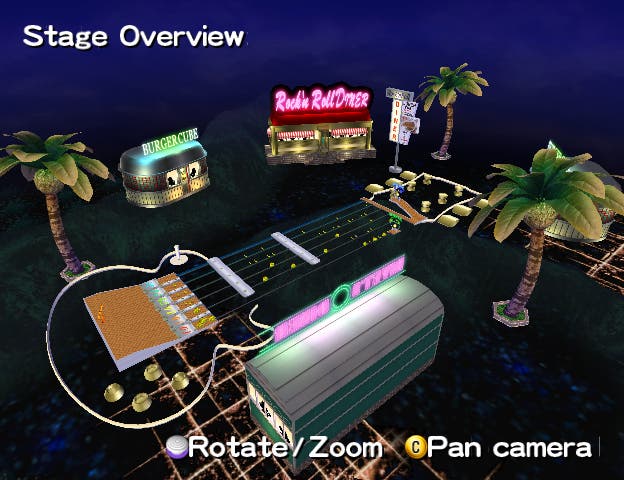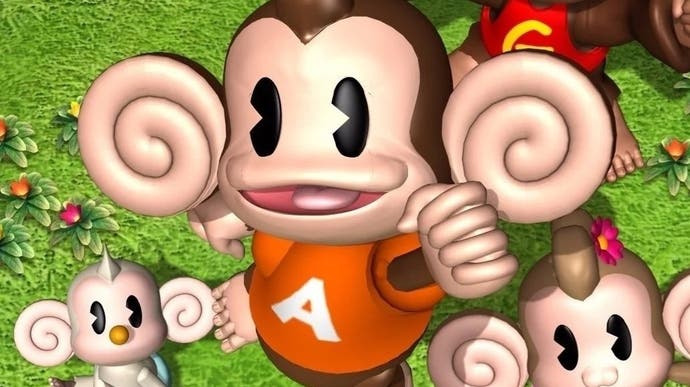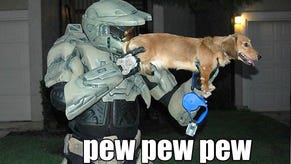The best launch titles ever: Super Monkey Ball on GameCube
AiAi of the beholder.
From Duck Hunt to The Legend of Zelda: Breath of the Wild, Nintendo is the undisputed king of the launch game. Two of its console debuts, Super Mario World and Super Mario 64, can lay claim to being among the greatest games ever made; Wii Sports is the fourth best-selling game of all time. So it is a delicious irony that the best launch game for the GameCube was made not by Nintendo but by its old arch-rival Sega - indeed, it was one of Sega's first releases as a third-party publisher. Revenge? Truce? Either way it was poignant.
The game was a port of a relatively obscure arcade title that you played with a banana joystick. It was also the creation of Toshihiro Nagoshi: a proponent of Sega's ecstatic, day-glo arcade aesthetic in the likes of Daytona USA before he remade himself as the inscrutable lounge-lizard behind the seedy and sentimental Yakuza series. The game was 2001's Super Monkey Ball.
In Super Monkey Ball, you guide a cartoon monkey in a ball - two-toned and slightly opaque, like a toy capsule - to a goal. The levels are abstract assemblages of platforms floating in space. There is one control: the analogue stick. The key thing to understand about Super Monkey Ball is that you do not control the monkey - or the ball - you control the level. You tilt the world this way and that to guide the monkey where you want it to go. It's like a surreal ball maze, or an inverted Marble Madness. There are banana pick-ups which increase your score, as does your completion time. There are difficult-to-reach warp gates that skip you forward several levels. And that is all there is to it.
The incredibly basic premise and blithe, bright, funky vibe belie a game of the rarest precision and purity. The physics and controls are exquisite - and best on GameCube, with its life-saving notches every 45 degrees around the circumference of the analogue stick. It is a classic arcade game but also a game you can devote hours to at a stretch, so deep and rewarding are the puzzles and skill challenges that the level designs extract from the simple set-up.
Some even transcend skill to become tests of resolve, confidence, even faith. The infamous level Advanced 11 is modelled like a guitar, with five completely straight lines or "strings" to its two goals, in decreasing width from 1.0 to 0.1. The 0.1 string seems to be only a pixel or two wide. You know rationally that all you need to do is line yourself up exactly and push forward, without the slightest deviation to either side, but it seems impossible - until you do it and realise it was easy all along, and your own mindset was undermining you. (I vividly remember my friend Leo teaching me to vanquish the 0.1 string in an afternoon, an almost Zen-master-like experience.)

What gave Super Monkey Ball longevity and made it a viral hit, or whatever passed for one of those in 2001, was its excellent suite of minigames. These included Monkey Bowling (possibly the best bowling game out there until Wii Sports came along) and the indelible Monkey Target, a sort of hybrid of ski jumping and gliding with a nicely judged risk-reward gamble in the selection of your landing spots. They're still fun party game options today.
But it is the main game that is burned into my muscle memory so brightly that I can pick up a controller now and ace trick-shot warp gates, 19 years on. You only get that from a game whose internal logic is as clear as crystal, whose execution is as polished and sharp as diamond. To deliver such a game at the launch of a new console - or at any other time, really - is an amazing feat.





